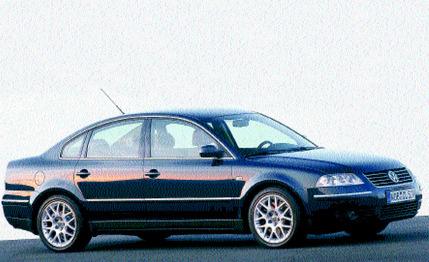 First Drive Review
First Drive Review
Although there are some who would like to see the internal-combustion engine go the way of the dodo and the dinosaur, Volkswagen has been busily reinventing it, and here's the latest example - an eight-cylinder powerplant that not only defies all tradition but also happens to fit under the hood of a smallish mid-size sedan. Which is the whole idea. How many eights do you see in this class? None, that's how many.
Okay, you could observe that Ford bolted a V-8 into the second-generation Taurus SHO, but that setup attracted about as many disciples as the late Harold Stassen in his regular bids for the Oval Office, and for much the same reason: booorrrring. Which is why it is, as they say, no longer with us. And in any case, although Ford's SHO eight was a little offbeat with its 60-degree vee (as distinct from the usual 90-degree design), it's as conventional as vanilla compared with VW's creation, which is really a pair of narrow-angle (15 degree) V-4s joined at the crankshaft. Thus the "W," though in truth it looks more like a "V" that got a little careless with a band saw.
Alphabetics aside, this looks to us like the first fundamental revision of the V-8 engine since Cadillac put the concept into series production in 1914. If Henry Ford's stillborn "X" engine - eight cylinders arranged in pairs around the crankshaft, like an aircraft radial - had reached production, it might be a different story. But that project dead-ended in the late '20s, so aside from some racing variants, down in their fundamental bones V-8s have been pretty much the same for 87 years.
Of course, what we're looking at here isn't totally new. Audi already sells a W-12, based on the same architecture, and it's been some 10 years since VW introduced the VR6, which was essentially a clever way to siamese the cylinders of an in-line six by staggering the angle of bores one, three, and five by 15 degrees from two, four, and six, all tucked under a single cylinder head.
Although there are more cylinders and more angles, the concept is the same with the W- Acht, as its creators call it. The angle between the outer bore centers of the left bank and the outer bores on the right is 72 degrees. The inner bore angle is 42 degrees, and each splayed bank is served by two chain-driven cams operating four valves per cylinder via roller rocker arms. Intake cam timing is continuously variable over 52 degrees; exhaust timing can be altered by 22 degrees.